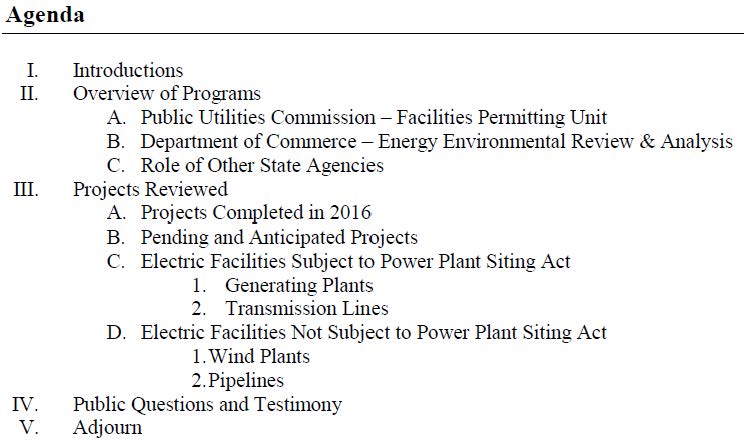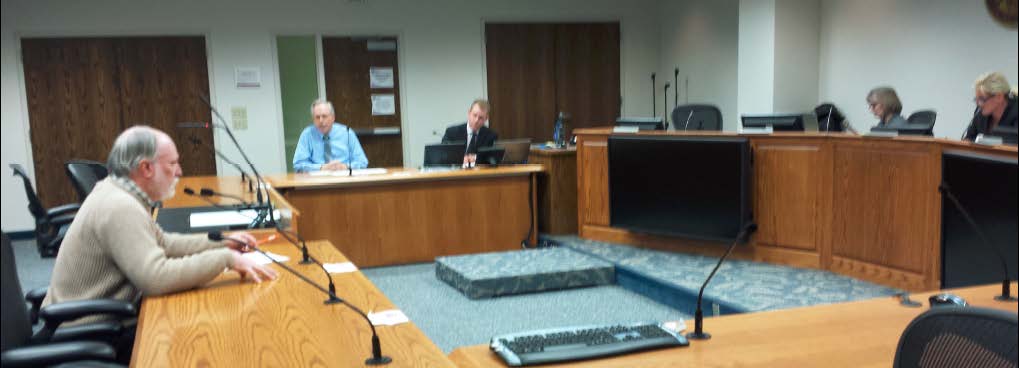Dodge Center Xmsn – Mission Accomplished!
July 30th, 2019
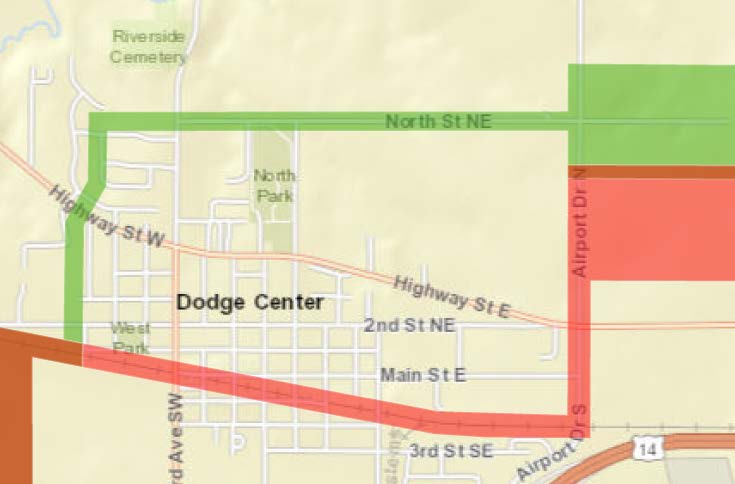
The Minnesota Department of Commerce issued the Draft EIS for the Dodge County wind project, and about the “C” and “D” route proposals for a 345kV line through the heart of Dodge Center, they had this to say:

Here’s the full DEIS Narrative:
This is an example of why it’s crucial to get involved early, that comments must be made at the outset before they have moved into evaluating a proposed route, so that they can consider the input of people on the ground in the initial evaluation. Here, at least 14 people weighed in on the impacts of the C and D routes on their homes and their lives, and that message was heard.
Now’s the time for the City of Dodge Center to acknowledge that it was Tom Applegate’s efforts, alerting the City of Dodge Center and the residents effected by this project’s Route C and D possibility, helping generate the many comments that were filed, that made Commerce’s rejection of these routes a reality.
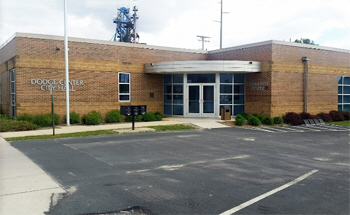
And I sure hope Commissioner Tuma acknowledges what a bad idea routes C and D were and that next time he has a routing idea, that he commits to spend at least an hour on google earth along the route to know what he’s proposing. These two proposed routes were the worst I’ve seen for a 345kV line.
Today’s Wind Rulemaking Comments
August 24th, 2018
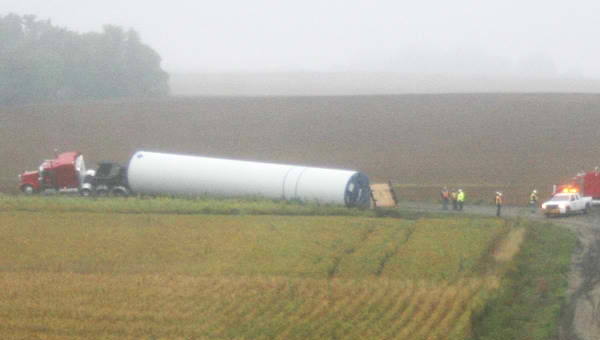
In July, Goodhue Wind Truth filed a rulemaking petition at the Public Utilities Commission, to spur a close look at the wind siting rules:
Shortly thereafter, the Commission a Notice and Request for Comments on our Petition:
Well, today they got their comments, all right! Here they are, Goodhue Wind Truth’s, and then in reverse alpha order:
Goodhue Wind Truth_Comments_FINAL
20188-146000-01_Comment_Rosenquist
EDF+Renewables+-+Response+to+Petition+for+Wind+Siting+Rulemaking+18-518
20188-145997-01_Coalition for Rural Property Rights
Docket+18-518+Clean Energy & Economy Minnesota+Comments
Avangrid+Renewables+Rulemaking+Comment
Commerce releases Freeborn Draft Site Permit
December 5th, 2017

Here it is:
17-410+Comments & Draft Site Permit
Now, get to work reading and doing a thorough mark-up!
Reply Comments on Minn. R. Ch. 7849 & 7850
June 1st, 2017
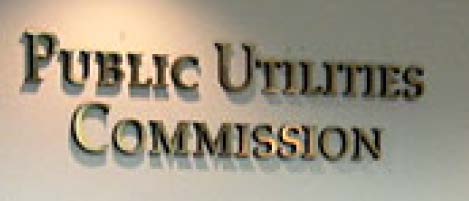
At long last, the final round of Comments on the 5+ year long rulemaking have been filed. A five year long process to enact the changes consistent with legislation passed in 2005, 12 years ago. WHAT!?!?! Yes, that’s how long it’s taken. These are rules based on the Minnesota statutes for Certificate of Need (Minn. Stat. 216B.243) and the “Power Plant Siting Act” (Minn. Stat. Ch. 216E), which is transmission routing and power plant siting.
Here are the Reply Comments, and note there are very few:
Public Intervenors – No CapX 2020, U-CAN, North Route Group & Goodhue Wind Truth – FINAL_May 31 2017
McNamasra GWT Reply_20175-132415-01
Commerce EERA Reply_20175-132345-01
ITC Midwest_Reply_20175-132421-02
Next step — on the agenda at a future Public Utilities Commission meeting, where they’ll discuss changes, hopefully we’ll have oral argument of the parties and comments from the public, and then the rules are formally released to the public for public comment, a hearing before an Administrative Law Judge, and then back to the Commission for approval. Probably it will be August… given the public comment period and hearing, this will be at least a SIX YEAR PROCESS!
2016 PPSA Annual Hearing
December 23rd, 2016
Tuesday was the Annual Hearing for the Power Plant Siting Act. I’ve been fighting off this sickness that Alan’s had for a week now, and not quite feeling right, more like life inside a pillow, everything’s rather dampened. But I slogged out into the world, and raised a few of the recurring points, issues with the Power Plant Siting Act, particularly public participation issues common not just to the Power Plant Siting Act (Minn. Stat. Ch. 216E ), but also to wind siting dockets under Minn. St. Ch. 216F, and pipeline routing dockets under Minn. St. Ch. 216G.
Here’s how to submit comments, deadline January 20, 2017:
Until this year, the Power Plant Siting Act Annual Hearing has included a review, rundown, listing, of all the projects approved by the Commission, including wind and pipelines, and this was anticipated at this hearing per the notice:
The full Notice:
HOWEVER… that report, “Projects Reviewed” section D, “Electric Facilities Not Subject to Power Plant Siting Act, did not occur. I’d guess in large part it was due to the many issues raised by those intervening and participating, or attempting to participate, in wind siting dockets who have appeared at PPSA Annual Hearings over the years. And I’m sure they did not want input from those participating and intervening in pipeline dockets, we’ve seen how Enbridge cancelled their “public informational meetings” up north after having to face the public and their legitimate issues the day before in Bemidji. Alan Mitchell, formerly EQB PPSA staff, and now working for Enbridge, was there, so this was on Enbridge’s radar, but of course, that Alan didn’t have any comments for the record (I do wish I remembered more about the pipeline rules rewrite that he worked on during his time at the EQB, I think somewhere around 2002-2004?).
The ALJ is to write a summary of the Comments, both at the meeting, and those filed afterwards, and then? What happens? Experience says “not much.” PUC staff responded to the “What happens” question saying that things that don’t require statutory changes or rulemaking, that those are things they want to impliment, to change, to improve, and to the extend that we can, we implement. So he said. When the report comes from the ALJ, they review it, they’ll have the transcript from this meeting, and will go over it.
There was a pretty crowded room, better attendance than for the last couple of years, with two new members of the public speaking up. John Munter, who has been very active in opposition to the Sandpiper and now the Line 3 “replacement” pipeline issues, spoke about the difficulties of participating in the dockets, the difficult to untangle web of “need” and “route” dockets, and of the many pipeline projects ongoing. Tina Carey spoke of the issues she and her neighborhood encountered during construction of the massive “largest in Minnesota” solar project that went up across the street, and that the complaint process was insufficient and ineffective, and the neighborhood’s complaints were disregarded. Cynthia Warzecha, of the DNR, gave a solid synopsis of DNR activities in PPSA dockets, and I’ll note that the DNR and DOT have really gotten into the groove of reviewing projects and providing material and substantive comments for consideration, in the EIS and in the route or siting docket (and also in environmental review in Certificate of Need dockets). Kristen Eide-Tollefson spoke as an individual with a 20 year history as a participant in routing and siting dockets, and noted for the record this legislative prelude to the transfer of environmental review from the EQB to the Dept. of Commerce:
2005 Session — Chapter 97, Article 3, lays out the purpose for transfer from EQB to PUC and DOC, of responsibilities for Siting, Routing and Environmental Review.Environmental Review. Sec. 17. To ensure greater public participation in energy infrastructure approval proceedings and to better integrate and align state energy and environmental policy goals with economic decisions involving large energy infrastructure, all responsibilities, as defined in Minnesota Statutes, section 15.039, subdivision 1, held by the Environmental Quality Board relating to power plant siting and routing under Minnesota Statutes, sections 116C.51 to 116C.69; wind energy conversion systems under Minnesota Statutes, sections 116C.691 to 116C.697; pipelines under Minnesota Statutes, chapter 116I; and rules associated with those sections are transferred to the Public Utilities Commission under Minnesota Statutes, section 15.039, except that the responsibilities of the Environmental Quality Board under Minnesota Statutes, section 116C.83, subdivision 6, and Minnesota Rules, parts 4400.1700, 4400.2750, and 4410.7010 to 4410.7070, are transferred to the commissioner of the Department of Commerce. The power plant siting staff of the Environmental Quality Board are transferred to the Department of Commerce. The department’s budget shall be adjusted to reflect the transfer.
2006 Report to PUC – Docket 06-1733
2007 Report to PUC – Docket 07-1579
2008 Report to PUC – Docket 08-1426
2009 Report to PUC – Docket 09-1351
2010 Report to PUC – Docket 10-222
2011 Report to PUC – Docket 11-324
2012 Report to PUC – Docket 12-360
2013 Report to PUC – Docket 13-965
2014 Summary Comments– Docket 14-887
2015 Summary Report – Docket 15-785


